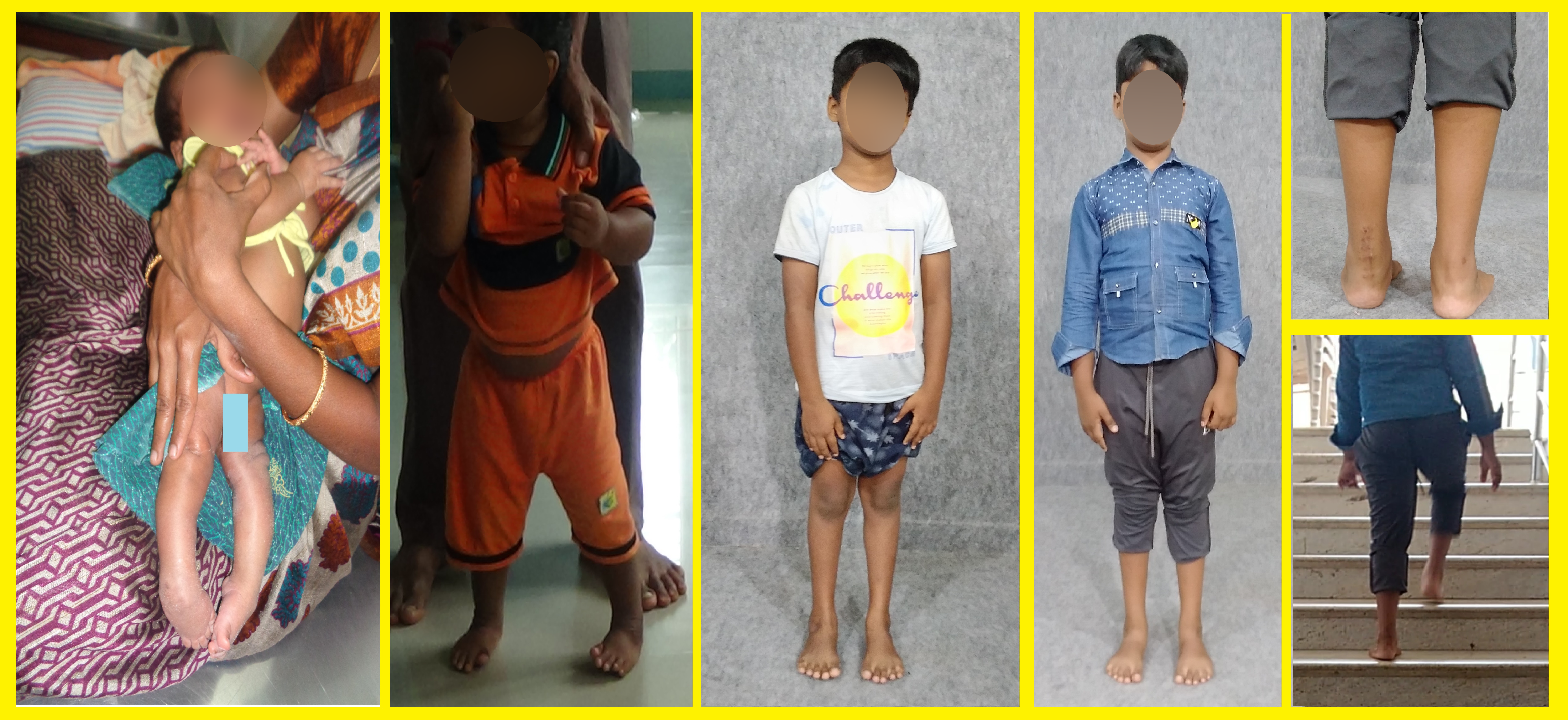Emergency Call
+91 96887 66611ARATHANA HOSPITAL, Mrs. Narmatha Shanmuga Sundaram Coimbatore Main Road Opposite to N.M Petrol Bunk Pollachi-642002 Coimbatore District Tamilnadu, India
+91 99427 77661
CTEV :
Clubfoot describes a range of foot abnormalities usually present at birth (congenital) in which your baby’s foot is twisted out of shape or position. In clubfoot, the tissues connecting the muscles to the bone (tendons) are shorter than usual. Clubfoot is a fairly common birth defect and is usually an isolated problem for an otherwise healthy newborn.
Clubfoot can be mild or severe. About half of children with clubfoot have it in both feet. If child has clubfoot, it will make it harder to walk normally, so doctors generally recommend treating it soon after birth.
Doctors are usually able to treat clubfoot successfully without surgery, though sometimes children need follow-up surgery later on.





Treatment :
Because newborn’s bones, joints and tendons are very flexible, treatment for clubfoot usually begins in the first week or two after birth. The goal of treatment is to improve the way child’s foot looks and works before he or she learns to walk, in hopes of preventing long-term disabilities.
Treatment options include:
• Stretching and casting (Ponseti method)
• Surgery
Stretching and casting (Ponseti method)
This is the most common treatment for clubfoot. Your doctor will:
• Move baby’s foot into a correct position and then place it in a cast to hold it there
• Reposition and recast your baby’s foot once a week for several months
• Perform a minor surgical procedure to lengthen the Achilles tendon (percutaneous Achilles tenotomy) toward the end of this process
After the shape of baby’s foot is realigned, need to maintain it with one or more of the following:
• Doing stretching exercises
• Putting child in special shoes and braces
• Making sure child wears the shoes and braces as long as needed — usually full time for three months, and then at night and during naps for up to three years.
Surgery :
If baby’s clubfoot is severe or doesn’t respond to nonsurgical treatments, more-invasive surgery may be needed. An orthopedic surgeon can lengthen or reposition tendons and ligaments to help ease the foot into a better position. After surgery, your child will be in a cast for up to two months, and then need to wear a brace for a year or so to prevent the clubfoot from coming back.
GENU VARUM & GENU VALGUM
Genu varum (Bowlegs):
Genu varum (upper panel) is a varus alignment of the knee. In varus deformities, the apex of the angle formed by the bones on both sides of a joint points away from the body.
Genu varum is common among toddlers and usually resolves spontaneously by age 18 months. If it persists or becomes more severe, Blount disease (tibia vara) should be suspected, and rickets and other metabolic bone diseases should also be ruled out
Genu valgum (Knock-Knees)
Genu valgum (lower panel) is a valgus alignment of the knee. In valgus deformities, the apex of the angle formed by the bones on both sides of a joint points toward the body
Genu valgum is less common than genu varum and, even if severe, usually resolves spontaneously by age 9 years. Skeletal dysplasia or hypophosphatasia should be excluded. If marked deformity persists after age 10 years, surgical stapling of the medial distal femoral epiphysis is indicated.